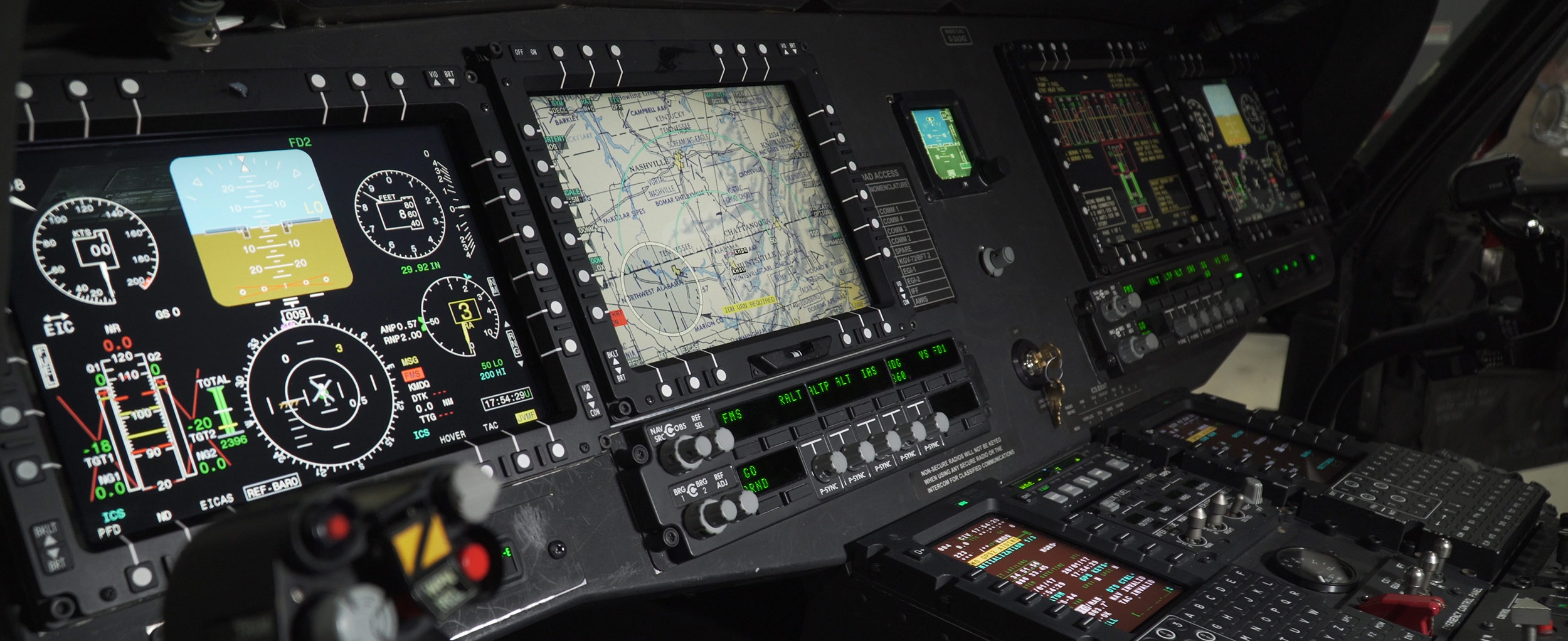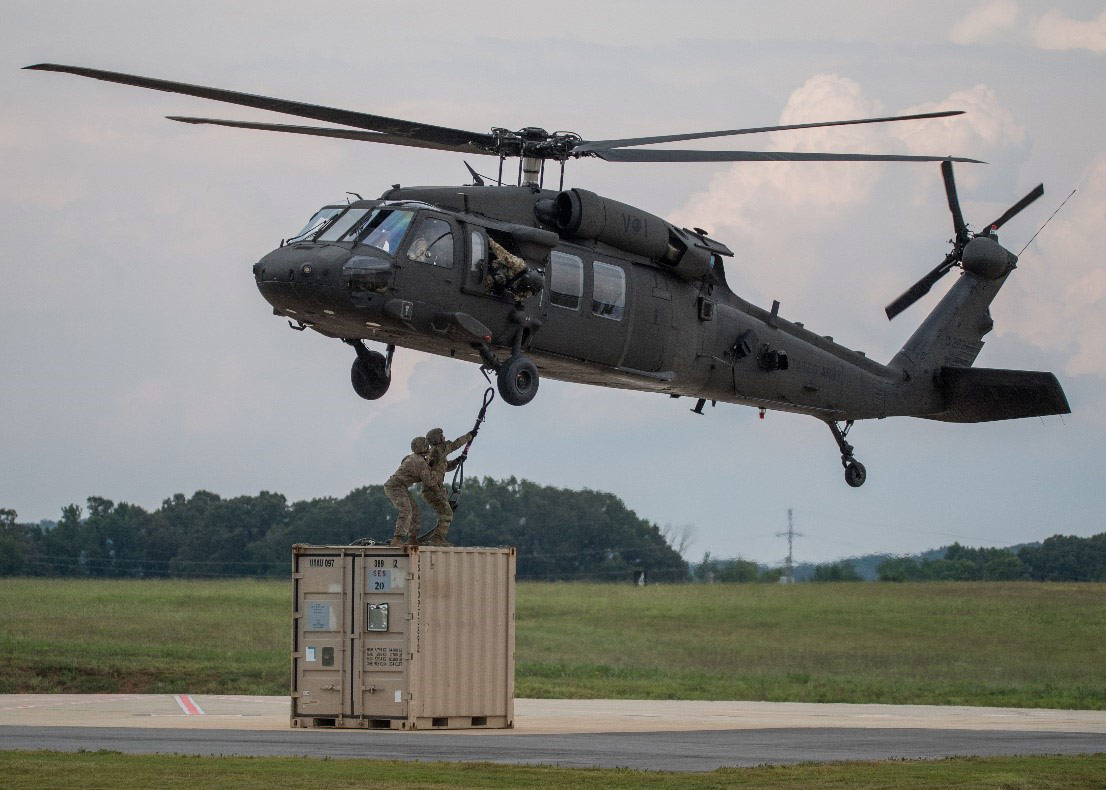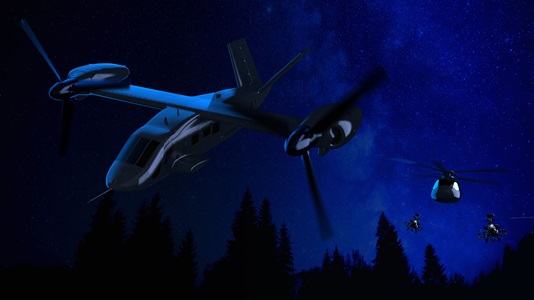Putting Cockpits under Glass in Vertical Lift Military Aircraft

By Brooks McKinney, APR
When the U.S. Army wanted to upgrade the analog cockpit of its workhorse UH-60L Black Hawk helicopter to an all-digital glass version, the service turned to Northrop Grumman, a leader in digital integrated avionics for military aircraft.
The updated helo configuration, known as the UH-60V, was delivered to its first users, the Pennsylvania National Guard, in July 2021. Northrop Grumman has proposed a similar technology refresh for the Republic of Korea's (ROK) fleet of 36 UH-60P special ops helicopters.
Modernized, Open Architecture Helps Customers Avoid Vendor Lock
"The proposed refresh will transition the UH-60P's older analog cockpit with its multiple steam gauges and federated displays to an all-digital, fully integrated glass cockpit with multifunction displays," said Lindsay McEwen, a vice president with Northrop Grumman.
Northrop Grumman developed the OpenLift modular open system architecture (MOSA) for the Army's UH-60V Black Hawk, and it is extensible to additional platforms, she added. The architecture features standardized hardware and software interfaces that allow anyone — not just the UH-60P's original equipment manufacturer — to provide upgrades for it.
"We think of ourselves as the Army's partner in modernization," continued McEwen. "Using OpenLift in the Black Hawk and other military aircraft will allow our customers to avoid what we call 'vendor lock' — reliance on a single vendor for upgrades, often under less-than-competitive conditions. OpenLift will allow our customers to select the best avionics hardware and software for future upgrades, regardless of the vendor(s) involved. This will enable cost-effective upgrades in the future."
Simplifying Pilot Workloads
According to Dennis Neel, senior director for the Integrated Digital Systems operating unit of Northrop Grumman’s Navigation, Targeting & Survivability Division, the heart of the UH-60P upgrade will be a new mission computer that integrates data from the previous analog avionics systems and presents the data on four digital cockpit displays.
"The new computer puts all of the mission data in a common format that humans can understand more easily," he explained. "Instead of having to interact and respond in real time to information coming from multiple radios, UH-60P pilots will be able to view and execute their mission from a single set of digital displays. This approach will ease pilot workload and allow them to conduct their special ops missions more effectively."
As an example, Neel explained that the UH-60P upgrade will allow ROK pilots to replace their current method of navigating with manual cards and multiple navigation systems with a fully integrated approach that enables them to visualize and plan their missions on a single automated display.

Open, Safe and Secure for Special Ops
For McEwen, the most important aspects of OpenLift — the architecture proposed for the UH-60P upgrade — are that it's open, safe and secure.
"In addition to using standard interfaces that make it easy to upgrade, OpenLift has been shown to be safe to operate in airborne environments," she said. "Pilots can also trust the security of the data being presented on its multifunction displays, a critical factor for special ops helicopters."
She added that the modular, digital nature of OpenLift also makes it extensible, which means that new capabilities can be added quickly and affordably.
OpenLift Upgrades Lead to Joint Missions
Neel noted that an OpenLift-based upgrade for the ROK's UH-60Ps would make the special ops helicopters interoperable with Army helicopters, enabling joint missions between the U.S. and the ROK.
"The OpenLift architecture would allow the ROK to take advantage of the significant investments in capability and safety that the Army has already made in the architecture, potentially saving the ROK a lot of time and money," he explained. "OpenLift's open design would also allow us to easily bring any radios designed by ROK under the glass."
Lifting the Army's Future
The OpenLift architecture promises to be a key ingredient in the U.S. Army's Future Vertical Lift (FVL) program. FVL is a research and development effort designed to identify, develop and mature technologies needed for Army Aviation's next generation of vertical lift military aircraft.
According to McEwen, the Army is currently focused on developing two medium transport FVL platforms: a utility variant called the Future Long Range Assault Aircraft (FLRAA) and a scout variant called the Future Attack and Reconnaissance Aircraft (FARA).
"Our partnership with the Army is really key here," McEwen observed. "We're working with them to make sure they're able to take full advantage of their investments in OpenLift to avoid vendor lock and field FVL platforms that are more capable, more survivable and more adaptable to rapidly emerging threats."
More Innovation Stories
Read all stories about advanced technology and innovation >>

